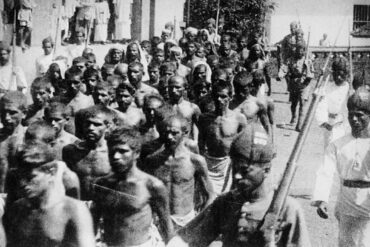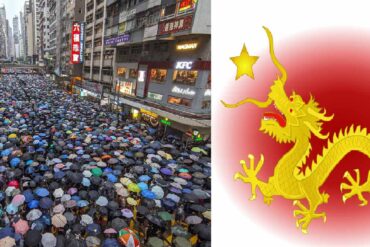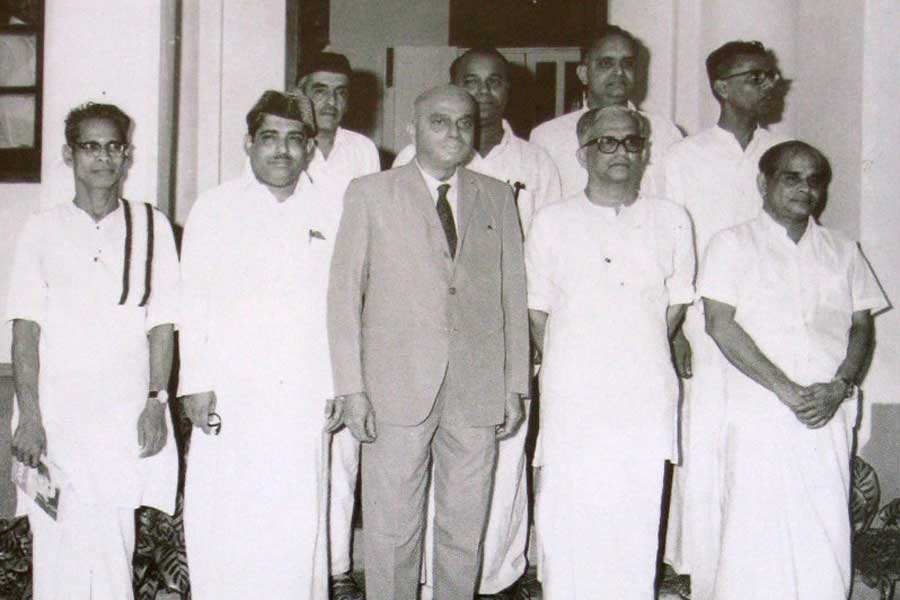Fifty years ago, on November 1, 1969 Communist Party of India (CPI) leader C Achutha Menon took over as Chief Minister of Kerala, leading a ramshackle coalition of a few political parties which did not enjoy majority support in the state legislature. It was an experiment that was predicted to be doomed, but eventually it turned out to be a political miracle. Despite the prophecies of doomsayers, Achutha Menon government went on to complete its full term for the first time for an administration in the state and then went on to win reelection, something which no other government has been able to pull off either before or after it.
The Achutha Menon government came out of sheer desperation on the part of the people and the political parties that took up the experiment. The incumbent chief minister was not even a member of the State legislature at the time of his oath-taking as Achutha Menon was serving as a Rajya Sabha member when he was persuaded to take over in Kerala by the coalition of a few minor parties following the collapse of the seven-party coalition government led by Communist Party of India (Marxist) leader EMS Namboodiripad which took power in 1967.
Looking back, it is now safe to conclude that the success of Achutha Menon lay in his ability to take the right lessons from the collapse of the predecessor government owing to its own internal squabbles. The most important lesson here has since come to be known as ‘coalition dharma’, or the best practices that would help sustain a coalition of parties with different agendas, interests and objectives. These lessons and the experiences generated by the Achutha Menon government later became the yardstick for successful coalition building not only at the state level but even elsewhere.
There are different aspects to the 1969 experiment. First, at the personal level, it was a contest between two powerful personalities, EMS Namboodiripad and C Achutha Menon, both veteran leaders of the undivided Communist Party in Kerala. Both were at the helm of political affairs for a long time—EMS having cut his political teeth in the British-ruled Malabar region, while Achutha Menon took to politics in the princely state ruled by the Rajah of Cochin.
They, however, found themselves on rival sides following the split in the Communist Party in 1964. At the time of the split, both were members of the Kerala Legislative Assembly—EMS the leader and Achutha Menon the deputy leader of the legislature group of the CPI. The CPI commanded support of more members of the assembly group and lost no time ejecting EMS from his position, and elevating Achutha Menon to the position of Leader of Opposition in the Assembly.
At the political level, it was to do with the rivalries between the two parties that vied to control the strong communist cadre base in Kerala. In the 1965 elections, both parties tried to strike an alliance but failed and so contested separately. The results were disastrous for the CPI which could win only three seats, all from the Travancore-Cochin region. In the Communist strongholds in Malabar, they lost heavily and forfeited deposits in all the seats they contested, except one. On the other hand, CPI (M) gained a windfall emerging as the most powerful party, winning 44 seats including the independents they supported.
However, the assembly was disbanded as there was no clear winner. The CPI (M) which had the largest number of seats was not in a position to stake its claim as 29 of its MLAs were in prison at the time. The Government of India had put hundreds of CPI (M) workers and leaders in jail under the Defense of India rule following the India-China war in 1964, following the ambivalent stance taken by the party, which came to be interpreted as supportive of China’s position.
It was in such circumstances that the CPI had to negotiate for an alliance with the CPI (M) in the next elections held in 1967. This time the CPI (M) could dictate the terms and CPI had to fall in line. One of the points of dispute in 1965 was about accepting the Indian Union Muslim League (IUML) as an alliance partner. CPI had objected to it in 1965 but two years later, they could raise no objections.
The seven-party alliance romped home winning 117 seats in the 133-member assembly. The 13-member ministry took charge in March 1967 with veterans like M N Govindan Nair and T V Thomas from CPI, C H Muhammad Koya from IUML and P R Kurup and P K Kunju from the Indian Socialist Party joining the government. EMS, K R Gouri, M K Krishnan and E K Imbichi Bava were the CPM representatives. T K Divakaran, B Wellington, and Mathai Manjooran represented the RSP, KTP and KSP respectively in the ministry.
The government had a flying start, but soon it ran into rough weather. The troubles started with corruption allegations against Health Minister B Wellington and CPI (M) ministers Imbichi Bava and M K Krishnan. The Chief Minister’s refusal to take cognizance of the corruption allegations raised a storm within the ruling front and, when he finally announced an official inquiry he included M N Govindan Nair and T V Thomas also in its ambit, making it clear that he took the corruption charges only a case of political one-upmanship on the part of his rivals.
In a coalition, that was an unfortunate line to take. M N Govindan Nair and T V Thomas were senior leaders of the CPI—the former was the (undivided) CPI state secretary who led the party to victory in the first election to the Kerala Assembly in 1957 and the latter was the leader of opposition in the government preceding that in the Travancore-Cochin Assembly—who continued to wield substantial clout in public life and had commanded respect among alliance partners. This was the reason why the mini-front within the seven-party alliance became a strong alliance of parties—CPI, RSP, ISP and IUML—that eventually turned out to be a formidable force that could challenge the CPI (M) and the Chief Minister.
The test of strength came on October 24 when a motion put up by CPI member E Chandrasekharan Nair was put to vote. The Chief Minister had declared that if the motion was carried by the House, he would take it as a motion of no confidence and would tender his resignation putting an end to the government. The motion was carried with the CPI, RSP, ISP and IUML voting as a single block within the ruling front backed by the Congress and Kerala Congress in the opposition. That brought an end to the second coalition government led by EMS Namboodiripad.
Chief Minister Namboodiripad was pinning his hopes on the calculation that, as per the practice in the past, the Assembly would be disbanded and after a spell of Presidential rule, the state would once again go to the polls. But Governor V Viswanathan, in consultations with the central government, decided to keep the Assembly in suspended animation while the mini-front leaders held negotiations for knocking up enough support for an alternative government. The Achutha Menon government was sworn in, in an attempt to bring stability to a state which had gained infamy for unstable governments like the French governments during the time of the Fourth Republic.
Achutha Menon formed a minority government led by the CPI with RSP, ISP, IUML and Kerala Congress as its coalition partners and Congress extending support from outside. The erstwhile coalition leader CPI (M) fretted and fumed at the government and its ministers and EMS even threatened Home Minister C H Muhammad Koya of the IUML that he would face the fate of Sir C P Ramaswamy Iyer who had to flee Travancore following a physical attack. C H Muhammad Koya also had to face an assault when a CPI (M) worker threw an acid bulb on him at Thalassery.
This coalition came back to power in the Assembly election held in September 1970 and following the general elections of 1971, Congress also joined it, paving the way for the most successful government in Kerala’s history that not only completed its full term but also got an extension due to the declaration of Emergency by Indira Gandhi. When the Assembly election was held again after the Emergency was lifted in 1977, the same coalition came back to power with an even bigger majority with K Karunakaran at the helm.
Cover Image: The First Achutha Menon ministry, 1969







